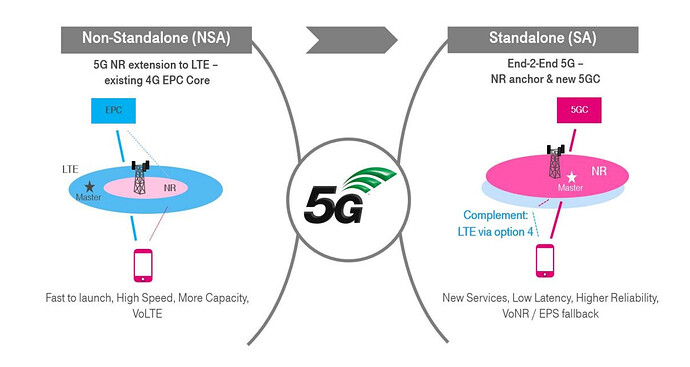In a 5G Non-Standalone (NSA) network, defining the anchor point is an essential step to ensure smooth handovers between the 5G and 4G networks. The anchor point is the node in the network that manages the handover process between the 5G and 4G networks. Here are some best 5 practices for defining the anchor point in NSA 5G:
-
Choose the right anchor point: The anchor point can be either the 5G base station or the 4G base station, depending on factors such as network topology, traffic load, and service requirements. If the 5G base station is chosen as the anchor point, it can provide better performance and lower latency, but it may require additional hardware and software upgrades. On the other hand, if the 4G base station is chosen as the anchor point, it can provide better coverage and compatibility with legacy devices, but it may not support some 5G-specific features.
-
Optimize handover procedures: The handover procedures between the 5G and 4G networks should be optimized to minimize latency, packet loss, and service interruption. This includes selecting the appropriate handover triggers, thresholds, and policies based on the network topology, traffic load, and user requirements.
-
Ensure compatibility between 5G and 4G networks: The anchor point should be able to support both 5G and 4G radio access technologies and ensure seamless handovers between the two networks. This requires proper configuration and synchronization of network parameters such as frequency bands, modulation schemes, and QoS policies.
-
Consider network capacity and scalability: The anchor point should be designed to handle the expected traffic load and provide sufficient capacity and scalability to support future growth. This includes optimizing the radio resource allocation, managing the handover traffic, and ensuring that the network can handle peak traffic loads.
-
Perform testing and validation: Before deploying the network, it is essential to perform testing and validation of the handover procedures to ensure that they meet the desired performance and reliability standards. This includes simulating different scenarios and user behaviors, measuring key performance indicators, and identifying and resolving potential issues.
I Know there are some other way to choose best ,please add on if anything else in your mind.
Credits: ![]()
